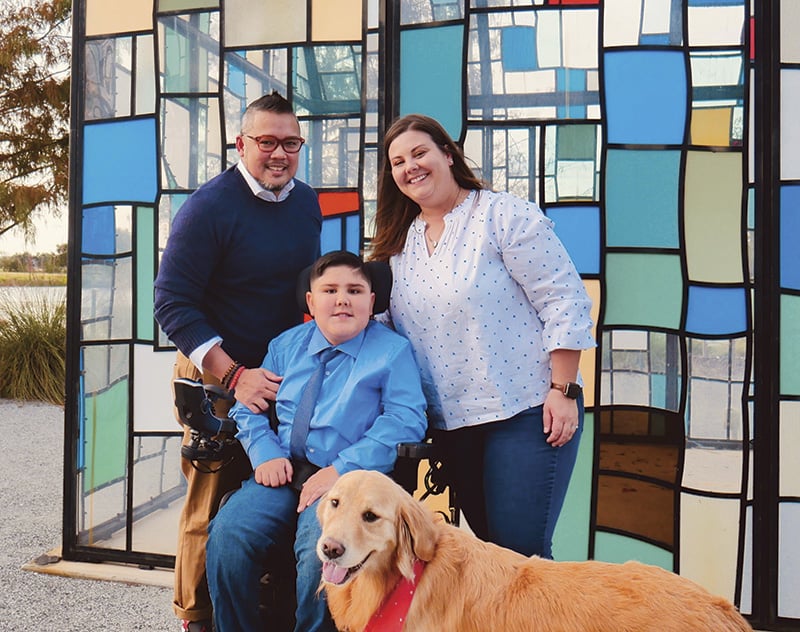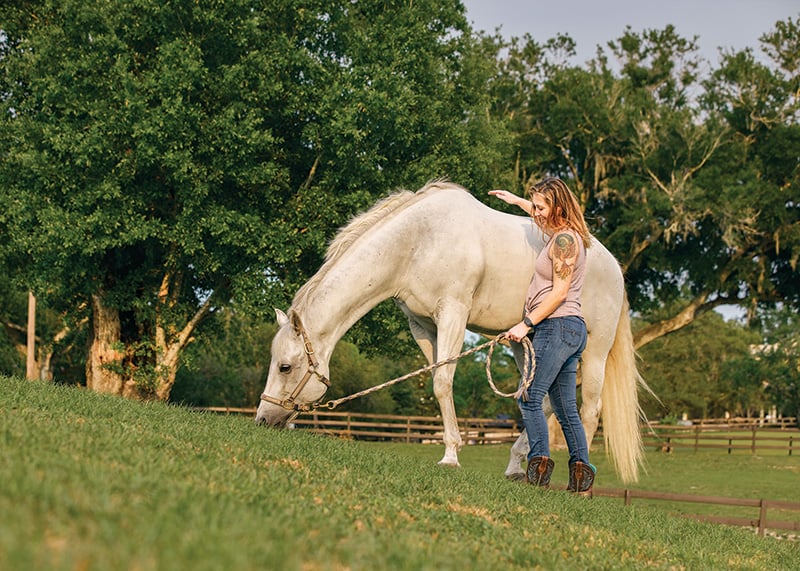Health: Starting a Yoga Practice
Last summer, I made a life-changing decision—I started a yoga practice. After spending much of 2020 sheltering in place, I discovered a “30-Days-for-$30” promotion at Red Sun Yoga in Winter Springs. While I’d tried yoga years ago, it just didn’t stick. I always felt like I was doing it wrong. But, with the continued pressures of the pandemic, I needed more movement and stress-relief in my days. I gave yoga another chance. I now practice yoga three to five times a week, including a mix of in-person group classes and at-home virtual classes.
Why did yoga stick this time? For me, it was all about finding the right studio—one that offered a variety of classes, with times that fit my schedule, with encouraging teachers, with a tranquil ambience. Red Sun checked all my boxes.
“Every studio has their own vibe,” says Sarah A. Morgan, owner of Red Sun. She notes that some studios focus more on yoga’s physical component (think downward-facing dog). But yoga also encompasses elements such as mindfulness, breathing techniques and meditation.
How can you find the right studio and get started with a yoga practice? Follow these tips:
Consider proximity. If you plan to attend in-person classes, you’ll want a nearby studio. If it’s too far away, it will be harder to practice consistently.
Manage expectations. How? “Don’t have any!” Morgan says. “Go with an open mind. Don’t think you’re too old, too out of shape—too anything,” adds Morgan. “If you can breathe, you can do yoga.” Katie Donzanti agrees. As owner of The Peaceful Peacock Yoga Studio in Orlando, Donzanti often hears people say they can’t do yoga. “I tell them, ‘I think you can. All you have to do is try. We never start out being experts in anything.’”
Start simply. “I highly suggest doing a beginner class or private session to learn the basics,” says Cortney Singleton, a yoga teacher at Orlando Power Yoga. She suggests borrowing or renting a mat, then investing in a good one when you’re more committed. “All you need are comfy clothes that are light and stretchy,” she says. Donzanti adds, “Know what your rhythm is, such as practicing daily or weekly. There’s space for frequent and sporadic yogis.”
Don’t give up after the first class. “Try yoga for 30 days, because you might not resonate with one class or one teacher,” advises Morgan. “Try different studios and try all the classes on the schedule.” Singleton echoes this sentiment, saying, “Give yoga 40 days. It takes this long to develop a new habit and feel the difference in your body and mind.”
Leave your ego at the door. “That’s probably the hardest part,” says Morgan, noting that no one in the studio is looking at you. “Everyone is focused inward because yoga is such an inward-focused practice.” Donzanti agrees, saying, “Give yourself the grace in the space. Celebrate every breath you get through—it means you’re alive!”
Listen to your gut. A good teacher will offer lots of modifications to make poses easier and more challenging. For instance, if you can’t touch your toes, hold on to your calf, suggests Singleton. “Be aware of what your body can do,” she says. “Yoga is not a competition—with yourself, the person next to you, or the teacher.”
Don’t worry that you’re doing something wrong. As long as you’re moving safely in a way that feels good, you’re doing yoga right. Some teachers might offer gentle adjustments (to help avoid injury), reminders (“relax your facial muscles”), or advice (such as what a correctly done plank looks like). But don’t be afraid to ask the teacher questions, Morgan points out.
Leave your cell phone in the car. “Don’t be afraid to disconnect with the outside world,” advises Morgan. “Really use that time to focus on you.”
Ready to start? Check out different studios’ websites and read through their FAQs (about what to bring, policies, etiquette, etc.) so you’re not surprised at your first class. When you’re ready, just show up—and breathe.




